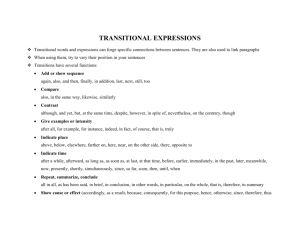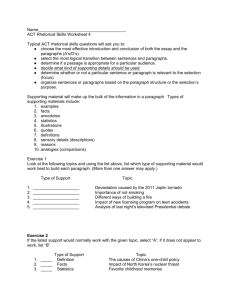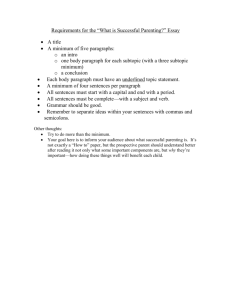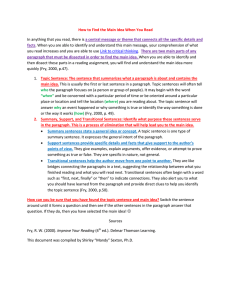Writing Coherently
advertisement
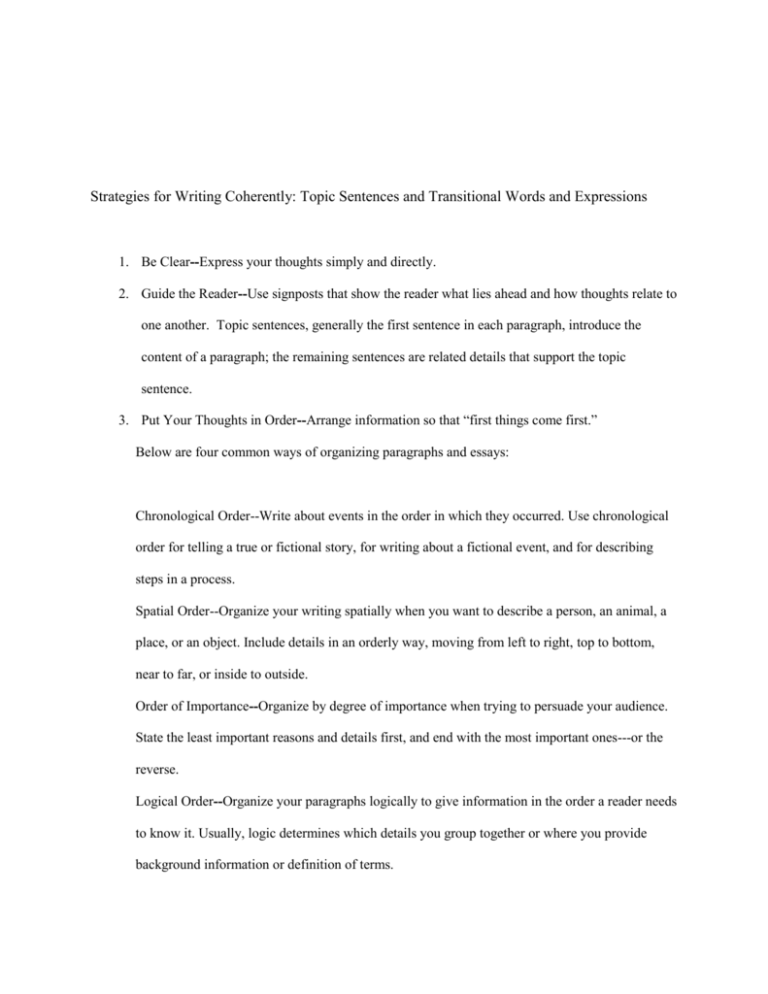
Strategies for Writing Coherently: Topic Sentences and Transitional Words and Expressions 1. Be Clear--Express your thoughts simply and directly. 2. Guide the Reader--Use signposts that show the reader what lies ahead and how thoughts relate to one another. Topic sentences, generally the first sentence in each paragraph, introduce the content of a paragraph; the remaining sentences are related details that support the topic sentence. 3. Put Your Thoughts in Order--Arrange information so that “first things come first.” Below are four common ways of organizing paragraphs and essays: Chronological Order--Write about events in the order in which they occurred. Use chronological order for telling a true or fictional story, for writing about a fictional event, and for describing steps in a process. Spatial Order--Organize your writing spatially when you want to describe a person, an animal, a place, or an object. Include details in an orderly way, moving from left to right, top to bottom, near to far, or inside to outside. Order of Importance--Organize by degree of importance when trying to persuade your audience. State the least important reasons and details first, and end with the most important ones---or the reverse. Logical Order--Organize your paragraphs logically to give information in the order a reader needs to know it. Usually, logic determines which details you group together or where you provide background information or definition of terms. Transitional words and phrases connect sentences within a paragraph or one paragraph to the next so that your writing flows smoothly. Some Common Transitional Words and Expressions To show time--after, afterward, at last, before, during, finally, first, immediately, later, soon, then, when To show place--above, across, among, behind, below, between, in front of, inside, into, off, outside, there, through, under To show examples--for example, for instance, in addition, in other words, namely, that is To summarize--as a result, finally, therefore To emphasize--for this reason, again, moreover, most important, in fact To show order of importance--above all, finally, first, most importantly, second, then, lastly To show cause and effect--as a result, because, consequently, if . . . then, for that reason, since, so, that, therefore To compare--also, and, like, likewise, as similarly, too To contrast--although, however, in contrast (to), nevertheless, on the other hand, but, still, yet so Source: Goldenberg, Phyllis, et al. Grammar for Writing. New York: SadlerOxford, 2000. Print.

